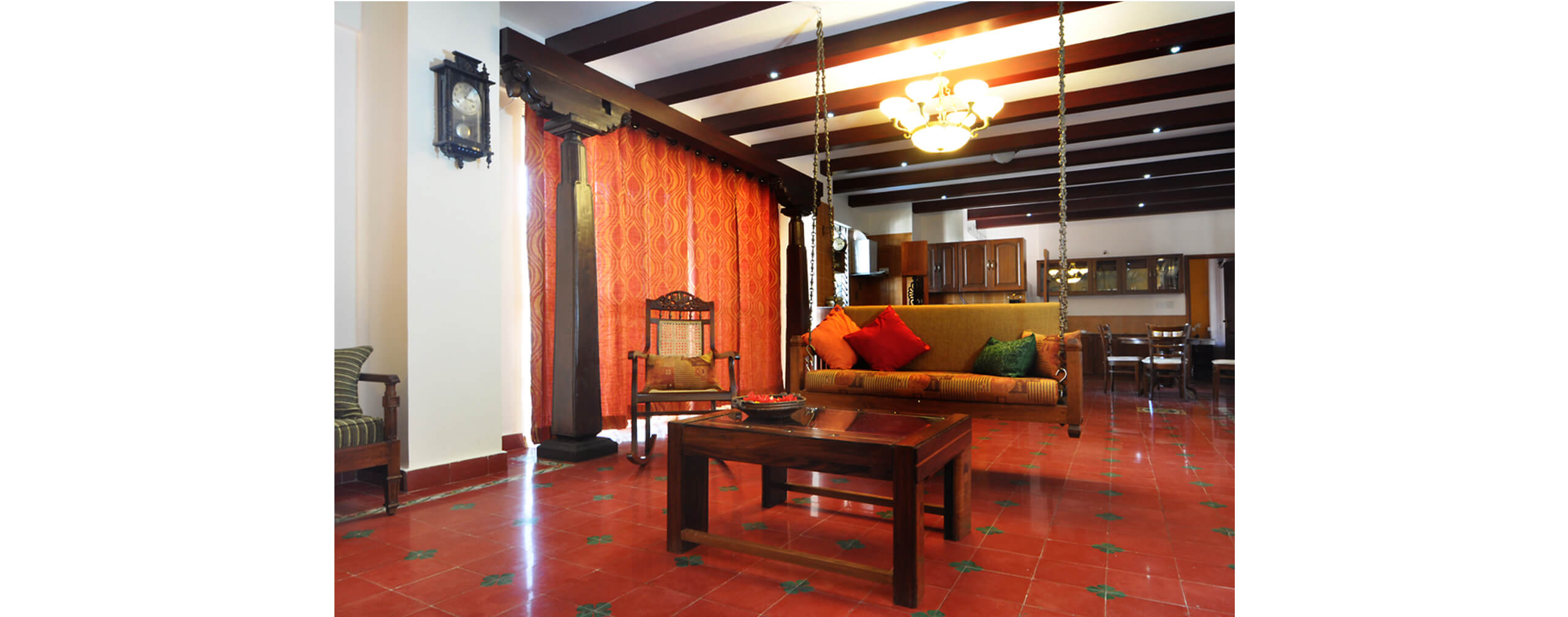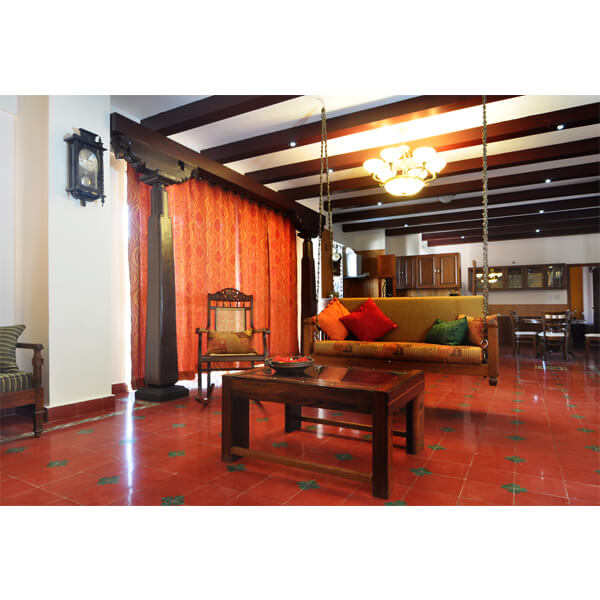16 Dec Jyothika Baleri


To a museum professional, a museum might be seen as a way to educate the public about the museum’s mission, such as civil rights or environmentalism.
Inspired by a Chettinad home Growing up in Bangalore, we often visited our ancestral home in a small village called Pazamaneri, near Tanjavur, Tamil Nadu. The humble village homes always fascinated me, with their courtyards, front porches, high ceilings and clear-storey lights. The well in the middle of the house always added to my excitement, as we had to draw water from it, to do our bit around the home during vacation. We spent a week every summer in this home, and it has had a profound impact on my design choices.

The charming courtyards surrounded by stone or wooden pillars were the centre of all the activity in the house. This was where they dried freshly rolled-out papads, and mixed and prepared various pickles. An old single cot or “cuttle” as they called it in Tamil, was placed in the shade next to the open courtyard, and my grandfather took his afternoon naps here. Every home had a quintessential “Unjal” or swing. It was where my grandma peeled fresh peas, or sewed in the afternoon before her nap.

These images are so vivid in my mind that I have been striving to bring this feel into our modern apartments and homes. With modernization, lots of traditional designs are lost easily. It has been my passion to bring back old styles through design. At Destination Designs, we believe in Reduce Reuse Recycle. So we have been using pillars, swings, frames, etc from the ruined mansions to create and recapture the look in modern day homes, thus keeping tradition alive.

The first opportunity I had to use these pillars was for a home where the owners had brought four such pillars from their ancestral home, wanting to reuse it in some way. We used it to adorn the living room and balcony and thus my journey to classical design started in a small way. This was in 2006.This started my journey on designing homes with a traditional touch.
Effective place-making demands sensitivity to, and cognisance of, power dynamics in and across urban space and its production.
Incorporating Chettinad designs into home design. Chettinad homes spell grandeur. They are reminiscent of an opulent time. To incorporate these design details into modern spaces, there are some limitations, mainly space and budget. At Destination Designs, we specialize in the field of renovations. Remodeling homes is notoriously challenging. But is also equally exciting to work with structural and spatial restrictions, and to incorporate existing elements into a new design, from both functional and aesthetic points of view. I especially enjoy renovating and remodeling homes to give it a traditional or ethnic look, while retaining modern functionality. My designs are particularly reminiscent of the traditional homes of the Chettinad era.

We usually have to work with limited space. Besides we are not building from scratch, but we are remodelling, and working with the space available. Keeping that in mind, we need to pick and choose what elements to include. The ideas are opulent, but the execution is not. We do our best to keep the essence of chettinad homes,but keep the functionality as modern as the client needs.

Budget plays a big role in how much detail we can bring in. But on the other hand, we can work with any kind of budget. We don’t want the client to think that she needs to spend an exorbitant amount in order to achieve the look she wants.

On specific principles we strive to adhere to Besides, I ensure that my work is environmentally friendly. While attempting to revive the styles of a bygone era, I stay true to the principles of the builders of yore by following the green principles of reducing, reusing and recycling materials. Every project we have undertaken at Destination Designs, incorporates these elements. I am working towards bringing back traditional Indian styles that reflect our rich heritage. I believe that blending tradition with modern convenience will bring these styles back into the mainstream design scene, and that the enhanced aesthetics and colours of these designs will elevate home décor to a higher plane.
The futuristic museums would be more adaptable, creative and confident, enabling it to survive and thrive in times of change.
On the future of the design industry and my role in it. Designers are always pushing the limits and that is something that will always continue. Where we need to spend more time is really educating the general public on what we do and the benefits of our profession. We don’t just pick materials and colours. Although I love that it’s really is only about 5% of what we do. Honestly I don’t know how our industry will evolve moving forward. We have seen so much change in the past ten years with the recession, inventions in technology and political climate. I do believe it will be positive change filled with its own exciting puzzles to solve, keeping traditional design styles alive!

But what is the Chettinad Style of Architecture? In the dry, arid lands of central Tamil Nadu, is the Chettinad region, known for its culinary delights. In this featureless landscape, among the ordinary dusty brown houses, gigantic explosions of colour and majesty arise from the brown earth, towering over everything around it. These tall and magnificent architectural wonders are private homes.

These mansions were built around the 19th and early 20th century by the Chettiars, a clan of globetrotting traders. Unfortunately, these houses are increasingly falling into disuse. The inhabitants are moving to cities, and the exorbitant cost of the upkeep of these gigantic houses is prohibitive. Some are now only full of dust and memories. Besides, they are susceptible to pillaging – the remarkable and precious architectural details fetch good prices on the market. There are only a handful of these mansions left, and there is a danger of them being gradually lost in the mists of time.

Through my work I hope to bring attention to this bygone era of design. I wish to work with artisans who still reproduce some of the magnificent woodwork and incorporate them further into my work. In the future, I would like to see the splendour of chettinad homes return to mainstream design.
Jyothika Baleri
DESIGN FIELD
Interior Design and Temporary Spaces
LOCATION
Bangalore, India
STUDIO NAME
Destination Designs
ABOUT
“I often judge a space on how it makes me feel. I want to create exciting spaces that make people feel good and take them back in time.”
On becoming an architect
My father was a big influence on my love of art and design and my decision to become an architect/ Interior designer. He had intended to go to JJ school of Art school at Mumbai in the 1960’s but, due to the other limitations at that time, his family decided it was best he didn’t go. But he still had a love of the furniture design and always encouraged my creative
side! I feel very lucky that I knew so early in my life that architecture and Interior Design was my calling!
I studied Architecture at MSRIT, Bangalore. I went on to do a short stint in furniture design at NID Ahmedabad in 2002.
I had been freelancing since 1998 at college. Destination Designs was formally established in 2006,and continues to strive for excellence in the design field. Awards & Accolades: In 2014, Destination Designs featured at RMIT- Symposium,
Melbourne in relation to the metamorphosis of design in Indian architecture. Destination Designs won the award for Best design firm in Karnataka in the Heritage style at National Architecture & Interior Design Excellence Awards 2019. Destination Designs has been featured on local Television in a 3 episode programme.


